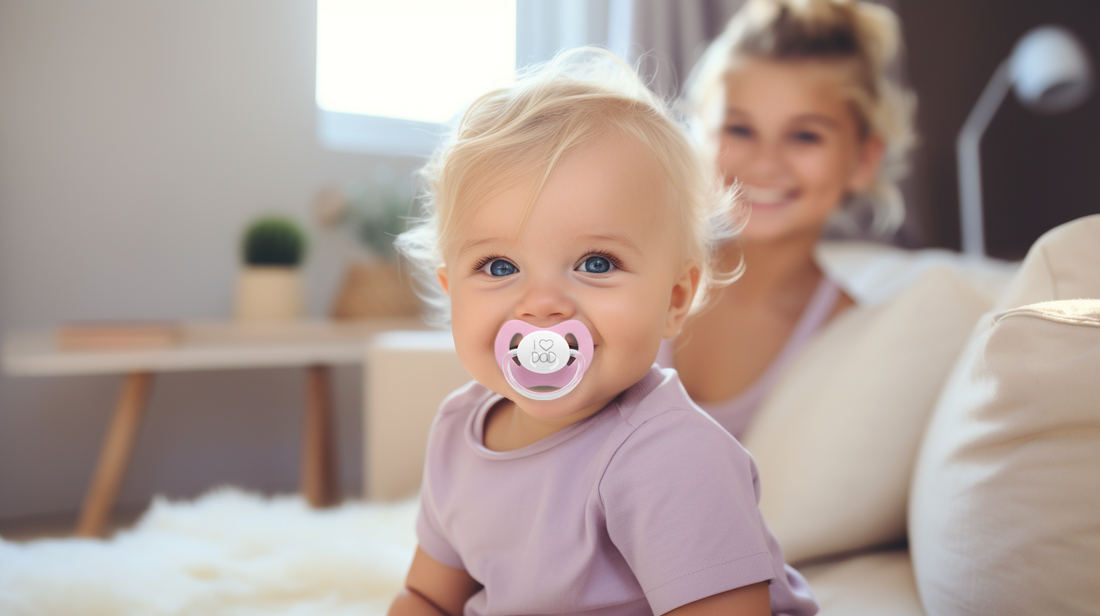Introduction
Choosing the right pacifier for your baby is an important decision, and it's one that many new parents find themselves contemplating. With so many options available, from different shapes and materials to various sizes and designs, it's natural to feel a bit overwhelmed. But fear not! In this comprehensive guide, we will walk you through everything you need to know to make an informed decision and ensure that your baby's pacifier is not only soothing but also safe.
1: Why Pacifiers Matter
Pacifiers have been a trusted companion for babies for decades, offering a source of comfort and self-soothing. But why are pacifiers important, and what benefits do they offer?
Soothing Comfort: Pacifiers provide babies with a non-nutritive way to satisfy their natural sucking reflex, helping them feel calm and content.
Reduced SIDS Risk: Studies have shown that pacifier use during sleep can reduce the risk of sudden infant death syndrome (SIDS).
2: Understanding Pacifier Shapes and Styles
Not all pacifiers are created equal. Different shapes and styles cater to various preferences and needs. Here's a breakdown of the most common types:
Orthodontic Pacifiers: Designed to mimic the shape of a mother's nipple, these pacifiers promote healthy oral development.
Cherry Pacifiers: These round-shaped pacifiers are a classic choice and often preferred by babies who enjoy sucking.
Anatomical Pacifiers: With a slightly flattened shape, these pacifiers strike a balance between orthodontic and cherry styles.
3: Choosing the Right Size
Pacifiers come in various sizes, typically categorized by age groups. Selecting the right size ensures a comfortable fit and reduces the risk of choking.
Newborn Pacifiers: Designed for infants up to six months old, these pacifiers are small and lightweight.
6+ Months Pacifiers: These are slightly larger and sturdier, suitable for older babies with stronger sucking reflexes.
4: Material Matters
Pacifiers are made from different materials, each with its advantages and disadvantages:
Silicone Pacifiers: Durable and easy to clean, silicone pacifiers are a popular choice. They are also hypoallergenic.
Latex Pacifiers: Softer and more flexible, latex pacifiers can be more soothing for some babies but may wear out faster.
5: Safety First
Ensuring the safety of your baby is paramount when selecting a pacifier. Here are some essential safety tips:
Inspect Regularly: Check the pacifier for signs of wear and tear, such as cracks or loose parts.
Avoid Decorative Attachments: Steer clear of pacifiers with decorative items like ribbons or beads, as they pose a choking hazard.
6: Personalizing Your Choice
Ultimately, the right pacifier for your baby may come down to personal preference. Some babies may have strong opinions about the type of pacifier they like, so don't be afraid to try a few options. Personalise your baby’s Pacifier and Pacifier Holder here: littlemico.com
In conclusion, choosing the right pacifier is an essential decision for any parent. It's about finding a balance between comfort, safety, and your baby's individual preferences. By understanding the different types of pacifiers, considering the size and material, and prioritizing safety, you can make an informed choice that keeps your little one content and secure.
Remember that each baby is unique, so don't be discouraged if it takes some trial and error to find the perfect pacifier. Your baby's comfort and well-being are worth the effort.
Now that you're armed with this comprehensive guide, you can confidently navigate the world of pacifiers and make the best choice for your precious bundle of joy. Happy parenting!
Browse our Pacifiers collection that is made in Germany from highest quality here: littlemico.com

